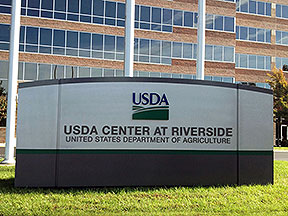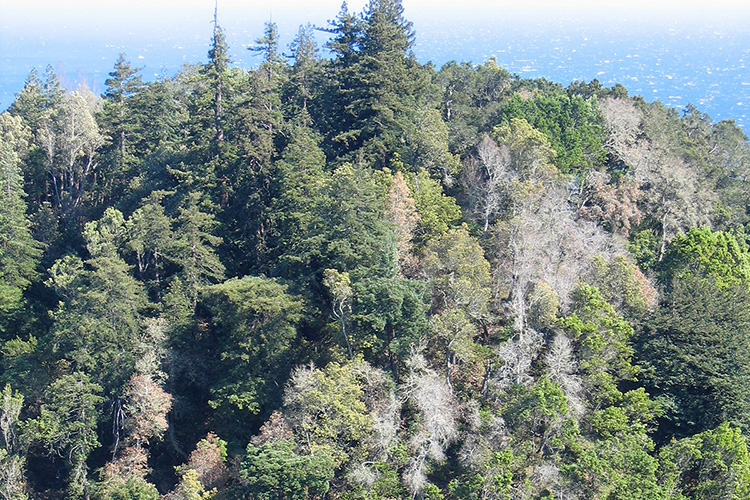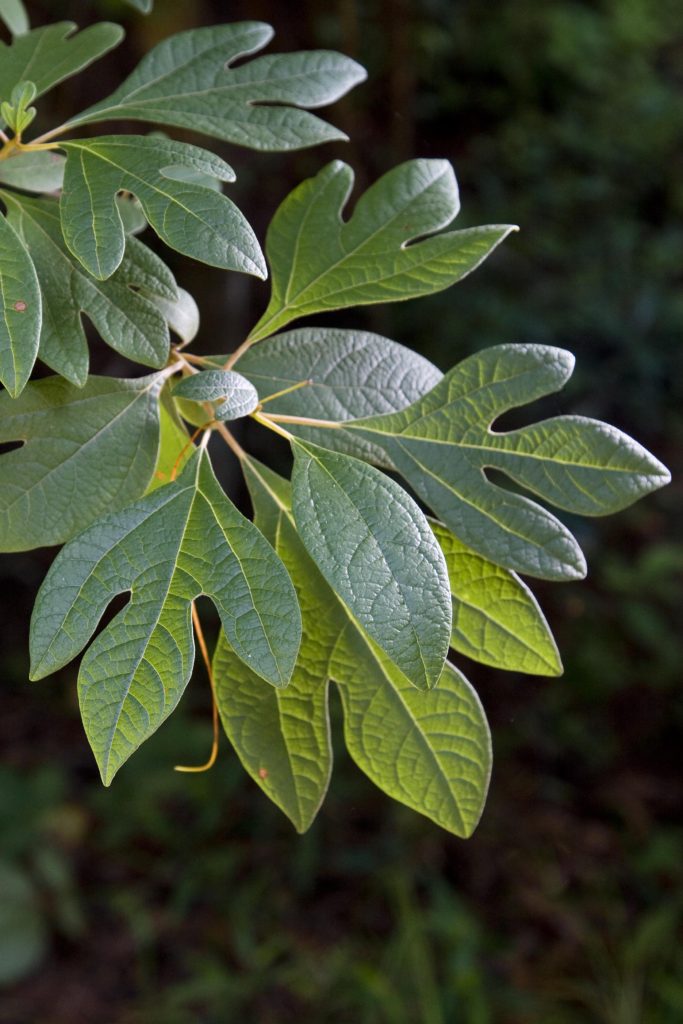
Imports of large numbers of plants for planting from Southeast Asia represents a significant biosecurity risk for forestry, horticulture, and natural ecosystems in North America and Europe. This threat is likely to grow unless APHIS takes action under its emergency authorities.
Recent pest introductions and related studies indicate that Southeast Asia is a newly-discovered center of origin for plant pathogens. Places of particular concern are Vietnam, southern Yunnan Province and Hainan Island of China, northern Laos, the eastern Himalayas, and Taiwan. Significant pathogens and associated insects apparently centered in these areas include the sudden oak death pathogen (Phytophthora ramorum) and other Phytophthora species; and several ambrosia beetles and associated fungi, including the laurel wilt fungus (Raffaelea lauricola) and its primary vector (Xyleborus glabratus), and the polyphagous (Euwallacea whitfordiaodendrus) and Kuroshio shot hole borers (Euwallacea kuroshio).
Southeast Asia is attractive to the plant trade because of the region’s high floral diversity, including such sought-after families as Ericaceae (rhododendrons). Indochina has more than 10,350 vascular plant species in 2,256 genera – equaling more than 20% of the world’s plant species (Jung et al. 2019).
Pathogens are notoriously difficult to detect during inspections at the time of shipment. One-time inspections of high volume imports are especially weak and prone to failure.
How do we protect America’s flora?
APHIS could — but has not yet — developed requirements that these countries institute integrated pest management procedures for their exporting nurseries – as provided under amendments to APHIS’ Q-37 regulation and ISPM#36. In any case, it is unlikely that such procedures would minimize the risk because many of the plants that would be imported would probably be wild-collected.
APHIS has – and should use – far more effective means to minimize risk. These are the Federal orders and listing process known as “not authorized for importation pending pest risk assessment” or NAPPRA. If – despite the scientific evidence – APHIS continues to allow high volumes of dangerous imports, the agency should immediately institute new phytosanitary controls to its inspection process. These include relying on risk-based inspection regimes and molecular high-through-put detection tools.
Supporting Material

Phytophthora species
A team of European pathologists, led by Thomas Jung and including Clive Brasier and Joan Webber (see full citation at the end of this blog) surveyed Phytophthora species by sampling rhizosphere soils in 25 natural and semi-natural forest stands, isolations from naturally fallen leaves, and waters in 16 rivers in temperate and subtropical montane and lowland regions of Vietnam during 2016 and 2017.
These studies detected 13 described Phytophthora species, five informally designated taxa, and 21 previously unknown taxa. Detections were made from soil samples taken from 84% of the forest stands and from all rivers.
As I reported in am earlier blog, P. ramorum and P. cinnamomi were among those species detected. Both the A1 and A2 mating types of both P. ramorum and P. cinnamomi co-occurred.
The survey also detected at least 15 species in other genera of oomycetes.
The scientists conclude that most of the 35 forest Phytophthora species detected are native to Vietnam or nearby surrounding areas, attributing species in Phytophthora clades (taxonomically related groups) 2, 5, 6, 7, 8, 9, and 10 as native to Indochina. Different clades were detected in high-elevation vs. lowland rivers, cooler (subtropical) vs. tropical streams, and in soils vs. streams. Given the relatively limited number and diversity of the sampled sites and ecosystem types, it is likely that the true Phytophthora diversity of Vietnam is markedly higher (Jung et al. 2019)
Worrying diversity of Phytophthora has been detected in other areas of Southeast Asia. A 2013 survey in natural forests and streams of Taiwan detected 10 described species and 17 previously unknown taxa of which 9 were of hybrid origin. In three areas in northern Yunnan, a Chinese province adjacent to northern Vietnam, eight Phytophthora species were isolated from streams running through sclerophyllous oak forests; two were recovered from forest soil samples. In montane forests of the tropical island Hainan, located in the South China Sea close to Vietnam, six Phytophthora species were found (Jung et al. 2019).
These studies are being conducted in the context of scientists discovering numerous new species of Phytophthora in recent decades. Since 1999, the number of described species and informally designated taxa of Phytophthora has tripled. World-renowned experts Clive Brasier anticipates that between 200 and 600 species of Phytophthora are extant in natural ecosystems around the world (Jung et al. 2019).
In the Vietnam survey, P. ramorum was the most widespread species. While genetic studies indicate ancestral connections to the four P. ramorum lineages (genetic strains) introduced to North America or Europe, further studies are under way to clarify these relationships (Jung et al. 2019).
Jung and colleagues found P. cinnamomi to be the most common soilborne Phytophthora species at elevations above 700 m. Two genotypes of the P. cinnamomi A2 mating type are causing epidemics in numerous natural and managed ecosystems worldwide. There was some evidence that the more frost sensitive A2 mating type might be spreading into higher altitudes in Vietnam (Jung et al. 2019).
Most of the Phytophthora species detected in the rhizosphere were not associated with obvious disease symptoms. (The principal exception was the A2 mating type of P. cinnamomi in montane forests in northern Vietnam.) (Jung et al. 2019) This lack of disease greatly reduces the chances of detecting the oomycetes associated with any plants exported from the region – there are no symptoms.
Since southern Yunnan, northern Laos, and the eastern Himalayas belong to the same biogeographic area those areas might also harbor endemic P. ramorum populations. Further surveys are needed to confirm this hypothesis (Jung et al. 2019).
Phytophthora lateralis – causal agent of Port-Orford cedar root rot – also probably originated in the area, specifically Taiwan (Vettraino et al. 2017).
Implications for phytosanitary measures
Many of the native Asian forest Phytophthora species have co-evolved with a variety of tree genera also present in Europe and North America, including Fagaceae, Lauraceae, Aceraceae, Oleaceae, and Pinaceae. Numerous examples demonstrate a strong potential that trees in these families that have not previously been exposed to these Phytophthora species might be highly susceptible. Scientists have begun an extensive host range study of Phytophthora species from Asia and South and Central America. One part of this study found that five Asian Phytophthora species caused significant rot and loss of fine roots and lateral roots in three European species of chestnut and oak (Jung et al. 2019).
Other pathogens
Studies by separate groups of scientists have concluded that several beetle-fungus disease complexes are native to this same region.

Both the laurel wilt fungus Raffaelea lauricola and its primary vector Xyleborus glabratus probably originated in Southeast Asia; there are probably different strains or genetic makeups across their wide ranges. For example, Dreaden et al. 2019 found that the fungus population from Myanmar differed genetically from those found in Japan, Taiwan, and the United States. Others had already expressed concern about the possibility that new strains of R. lauricola might be introduced (Wuest et al. 2017, cited in Cognato et al. 2019).
Cognato et al. 2019 found that the beetle occurs in deciduous forests from southern Japan to Northeast India, so genetic variation across this range is likely. In fact, they have separated the species X. glabratus into three species. They found that some of the beetles might thrive at 40o North – the latitude of central Illinois, Indiana, and Ohio and southern Pennsylvania. The ability of the vector of laurel wilt disease to spread so far north poses an alarming threat to sassafras (Sassafras albidum) – which is a major understory tree in forests of these regions.
It is unknown whether these new species and X. glabratus lineages are associated with different fungal strains. In company with the pathologists cited above, Cognato et al. 2019 warn that preventing introduction of the three beetle species to other regions is prudent. Cognato et al. 2019 point out that if other beetle lineages from the southern extent of their range can tolerate hotter and drier conditions, they might pose a greater risk to host species in the more arid areas of California and Mexico. In addition, Central America is at great risk because of the numerous plant species in the vulnerable Lauraceae found there.
Also from the region are two beetle-fungus combinations killing trees in at least seven botanical families, including maples, oaks, and willows, in southern California. The polyphagous shot hole borer (Euwallacea whitfordiaodendrus) apparently is native to Vietnam (Eskalen et al. 2013) and the closely related Kuroshio shot hole borer (Euwallacea kuroshio) to Japan, Indonesia, and Taiwan (Gomez et al. 2018).
What you can do
Getting APHIS to act
1) communicate concern about the risk to APHIS leadership and ask that the agency take action under its NAPPRA authority
2) communicate the same to intermediaries who can influence APHIS:
- State phytosanitary agency – especially through regional plant boards and National Plant Board
- Your Congressional representative and senators (especially if one or more serves on Agriculture or Appropriations committee)
- Professional societies – American Phytophathological Society, Mycological Society, American Society of Entomologists, Society of American Foresters …
3) communicate the same to university leadership and ask that their lobbyists advocate to USDA
4) communicate the same to the media
2) Research on extent of North American tree species’ vulnerability to the Oomycetes and other associated microorganisms
Jung et al. 2019 say that studies are under way to identify potential pest-host relationships with important tree species. However, all the authors are Europeans. Is anyone carrying out tests on North American trees in the apparently most vulnerable families — Fagaceae, Lauraceae, Aceraceae, Oleaceae, and Pinaceae?
1) Communicate with colleagues, scientific societies, APHIS, Agriculture Research Service, National Institute of Food and Agriculture, and USFS to determine whether such tests are under way or planned.
2) In those cases where no studies are planned, work with above to initiate them.
Sources
Cognato, A.I., SM. Smith, Y. Li, T.H. Pham, and J. Hulcr. 2019. Genetic Variability Among Xyleborus glabratus Populations Native to Southeast Asia (Coleoptera: Curculionidae: Scolytinae: Xyleborini) and the Description of Two Related Species. Journal of Economic Entomology XX(XX), 2091, 1 – 11.
Dreaden, T.J., M.A. Hughes, R.C. Ploetz, A. Black and J.A. Smith. 2019. Genetic Analyses of the Laurel wilt Pathogen, Raffaelea lauricola, in Asia Provide Clues on the Source of the Clone that is Responsible for the Current USA Epidemic. Forests 2019, 10, 37
Eskalen, A., Stouthamer, R. Lynch, S.C., Twizeyimana, M., Gonzalez, A., and Thibault, T. 2013. Host range of Fusarium dieback and its ambrosia beetle (Coleoptera Scolytinae) vector in southern California. Plant Disease 97938-951.
Gomez, D.F., J. Skelton, M.S. Steininger, R. Stouthamer, P. Rugman-Jones, W. Sittichaya, R.J. Rabaglia, and J. Hulcr1/ 2018. Species Delineation Within the Euwallacea fornicatus (Coleoptera: Curculionidae) Complex Revealed by Morphometric and Phylogenetic Analyses. Insect Systematics and Diversity, (2018) 2(6): 2; 1–11
Jung, T., B. Scanu, C.M. Brasier, J. Webber, I. Milenkovic, T. Corcobado, M. Tomšovský, M. Pánek, J. Bakonyi, C. Maia, A. Baccová, M. Raco, H. Rees, A. Pérez-Sierra & M. Horta Jung. 2020. A Survey in Natural Forest Ecosystems of Vietnam Reveals High Diversity of both New and Described Phytophthora Taxa including P. ramorum. Forests, 2020, 11, 93 https://gcc02.safelinks.protection.outlook.com/?url=https%3A%2F%2Fwww.mdpi.com%2F1999-4907%2F11%2F1%2F93%2Fpdf&data=02%7C01%7C%7Cfcd843919a3348a4a56108d7974039ab%7Ced5b36e701ee4ebc867ee03cfa0d4697%7C0%7C1%7C637144174418121741&sdata=WayrZsxp3P9Kj0h1aDPZnzu4yjDGA2ZEuH9NZITFQF4%3D&reserved=
Vettraino, A.M., C.M. Brasier, J.F. Webber, E.M. Hansen, S. Green, C.Robin, A. Tomassini, N. Bruni, A. Vannini. 2017. Contrasting microsatellite diversity in the evolutionary lineages of Phytophthora lateralis. Fungal Biology Vol. 121, Issue 2, February 2017, pp. 112-126
Posted by Faith Campbell
We welcome comments that supplement or correct factual information, suggest new approaches, or promote thoughtful consideration. We post comments that disagree with us — but not those we judge to be not civil or inflammatory.